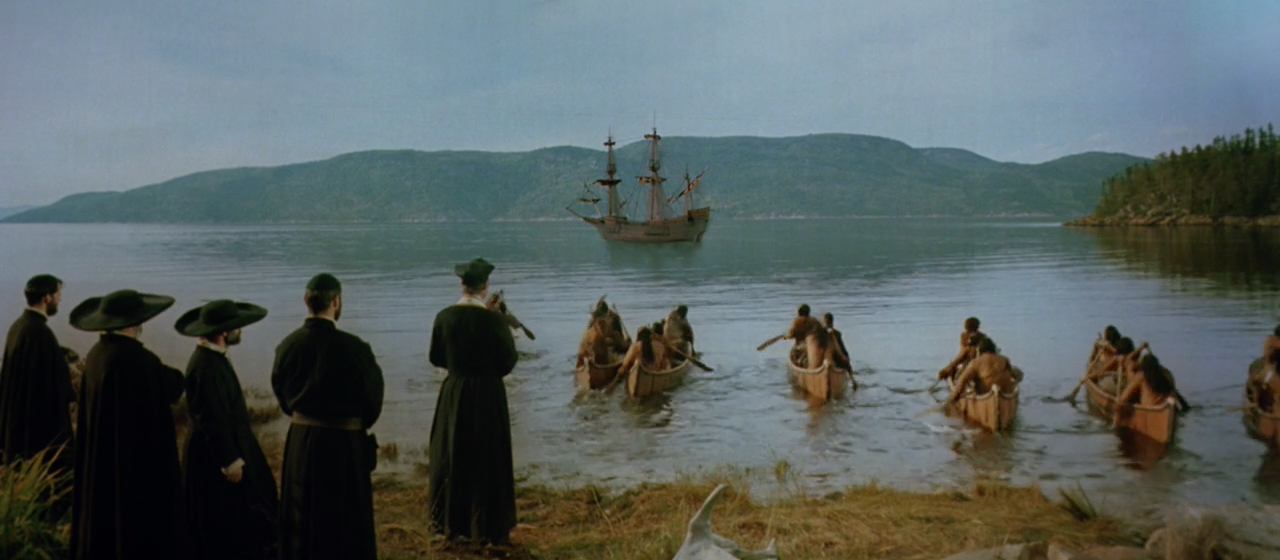
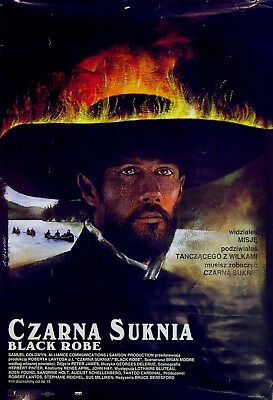
“The savages live in outer darkness.”
It is a rare film that takes Christianity seriously while also looking at it critically. If we break out the old Venn diagram, the intersection between that set of films and the set containing those that are up to muster from an artistic standpoint is depressingly small. Bruce Beresford’s Black Robe is a work that meets both criteria. Austere, devoid of sentiment and romance, it concerns the arduous journey of a Catholic priest through the uncivilized lands of North America circa 1634, as he travels from a settlement in New France to the hinterlands of Canada some 1,500 miles away with the objective of establishing a mission in a remote Huron village.
It’s a bleak affair, and none too inviting. It often holds the audience at arms’ length as it roughly articulates the differences between the European and Native American worldviews. Soberly, with brief flashes of brutality, it brings these disparate perspectives into conflict, sympathetically depicting the inner turmoil and open hostility that result. Without unlikely heroes, gaudy distractions, and simple quests, Black Robe is an ominous peregrination into darkness; borne of genuine compassion, but for which the missionary priest proves ill-prepared. He is pulled forward by the unshakable gravity of his calling and yet his undertakings produce ambiguous results if not outright failure. Indeed, even the ostensible righteousness of its coda is tinged with melancholy. This aura of despair that is carried throughout, this haunting specter of foreboding, will make Beresford’s study of character and culture a tough watch for some. But for those of a certain temperament, its resonant themes and unblinking exploration of abstruse notions of God, faith, afterlife, mortification, and proselytization offer a profound cinematic experience that will linger and spark contemplation.
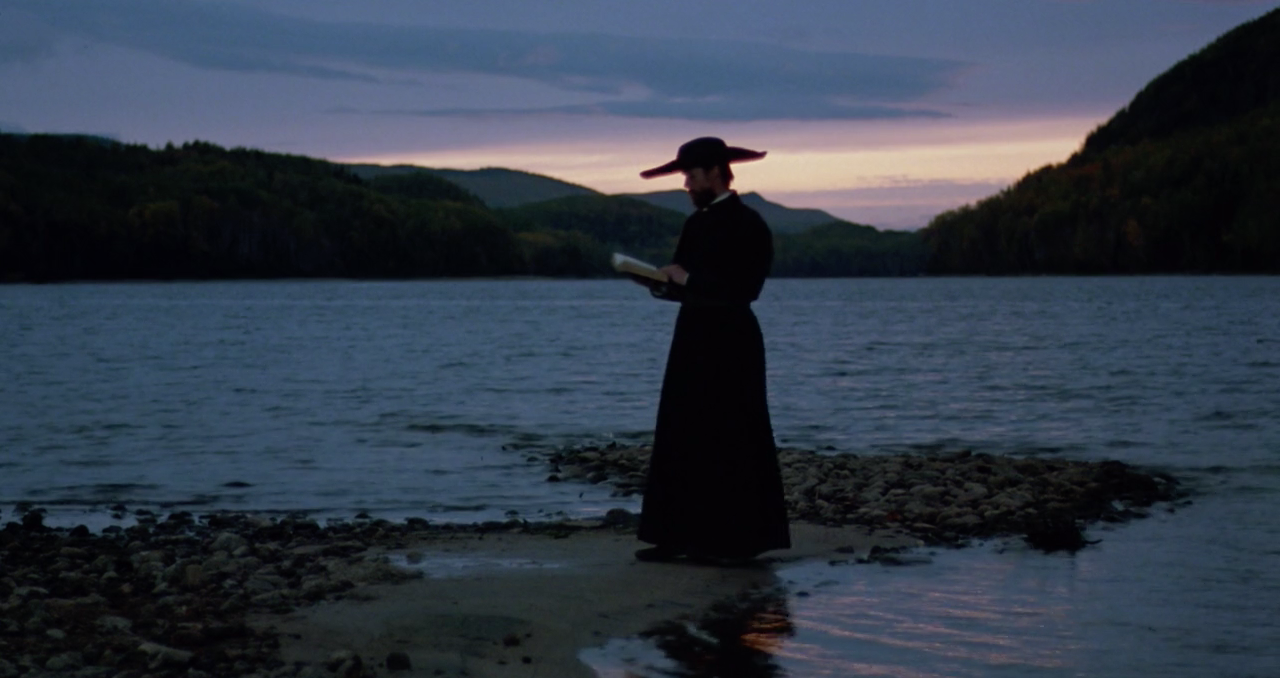
Set during the time of the Beaver Wars, Black Robe begins in the settlement that would one day become Quebec City, where Jesuit missionaries have begun sharing the tenets of their faith with the local Algonquins. A rough system of economic exchange has developed between the settlers and the natives, and as winter approaches a deal is made for Father Paul LaForgue (Lothaire Bluteau) to travel north with a group of Algonquins. He sets out in the company of Daniel (Aden Young), a fellow settler, and a small band of natives that includes the clairvoyant Chomina (August Schellenberg), his wife (Tantoo Cardinal), and their daughter Annuka (Sandrine Holt), among others. But Father LaForgue cannot accustom himself to the unfamiliar way of life and is given pause by memories of his past—a young woman he might have married, a fellow priest mutilated by “the savages.” Even as the settlers try to introduce civilization and Christianity to the tribes, the natives in turn exert an influence over them. This notion is illustrated in an early scene where captain Samuel de Champlain (Jean Brousseau) converses with one of the settlers in a fur-covered garb that resembles the attire of a chieftain.
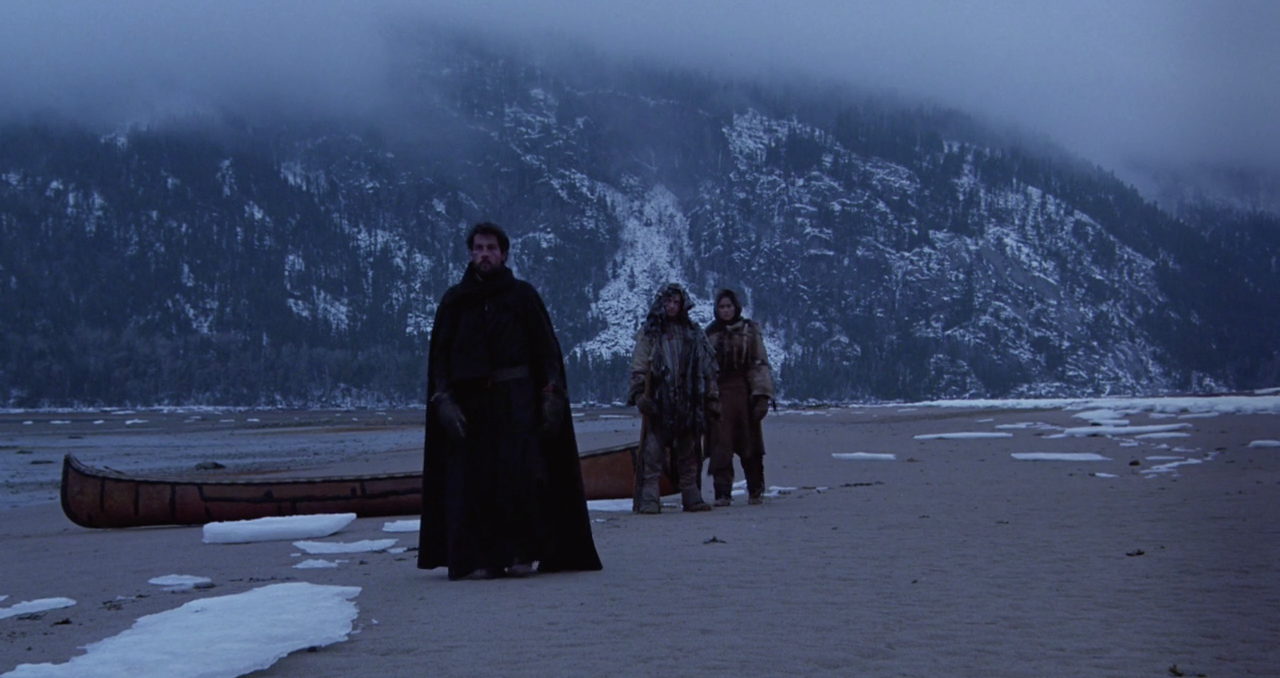
It is given further traction by a romantic subplot involving Daniel and Annuka. Daniel smokes the tribe’s communal pipe, eats meals with them around the cookfire, and abandons whatever faith he had in the Christian God. He defends their uncivilized way of life and their conception of the afterlife, making a case to Father LaForgue that they are true Christians even though they exhibit no comprehension of the priest’s teachings. Even when the Algonquin elders decide to abandon the Frenchmen out of fear that their presence angers the native spirits—leaving Daniel and LaForgue on an island without supplies—Daniel pursues Annuka at great risk to his own life. A stark contrast between the two foreigners is drawn when Father LaForgue admits to Daniel that he too committed the sin of lust by thinking of Annuka inappropriately, going so far as to flagellate himself in remorse. It is clear that even though Father LaForgue is struggling to maintain his faith, he has not abandoned it as Daniel has. And yet as the traveling party is whittled down to only those three as the film approaches its final act, Father LaForgue commands Daniel to stay with Annuka rather than accompany him to the Huron village.
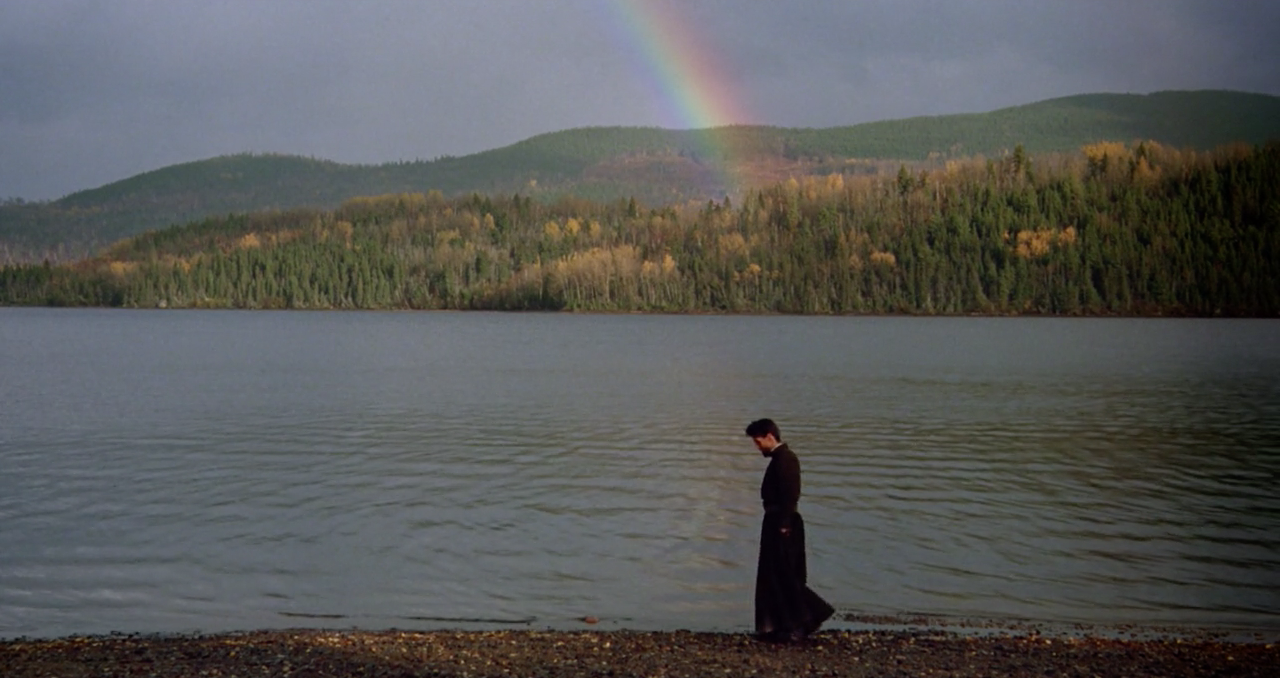
But Daniel was never dedicated to his mission in quite the same way as Father LaForgue and so it is the priest’s wavering arc that proves most poignant. Loyal to his God and his superiors within the Church, LaForgue remains committed to the salvation of the natives even as he privately finds them to be myopic and ignorant, maybe even under demonic influence. They, too, contemplate the possibility that LaForgue is a demon, as a tribal shaman interprets his every action as dark sorcery. For instance, he compels the elders to believe LaForgue’s blessing of a stillborn baby was an act meant to steal the child’s soul. Yet after LaForgue wanders off and finds himself lost in the woods, he passionately embraces the native hunter who finds him, an unsophisticated tribesman who says to the priest, “How could anyone become lost here?”
A further corrective episode comes when Chomina returns in shame after abandoning LaForgue only to see his wife slain by an Iroquois arrow. He is then taken captive by a savage war tribe along with Father LaForgue, Daniel, and Annuka. In the hands of the Iroquois they are tortured and humiliated, and it is only Annuka’s willingness to sacrifice the pleasures of her body to their captors that allows them to escape. Despite these positive indicators in Chomina’s character, LaForgue remains unsuccessful in his pleas for Chomina to accept salvation. Nevertheless, a bond is forged between them, and LaForgue honors the dream-vision of the dying Chomina by traveling to the Huron village on his own.
I find it interesting that the film garnered praise for its dedication to historical research but was also criticized for its negative portrayal of several tribes as brutal sadists. Based on the book of the same name by Brian Moore, who also wrote the screenplay, it uses a number of different Indian languages as well as Latin (though in true Hollywood style, English is substituted for French). Tactility is attained by using authentic elements of transport, shelter, meal prep, and war. A magnificent sense of place is achieved by the on-location shoot in Quebec. By all accounts, it’s one of the truest depictions of Indian culture put to film. But an accurate portrayal flies in the face of popular revisionist descriptions of the natives as enlightened, superior beings—“noble savages,” as it were. I have no dog in the fight, nor could I personally argue either side of the case. But no one actually seems to be arguing that the depiction is wrong. They just don’t like it. They prefer revisionism.
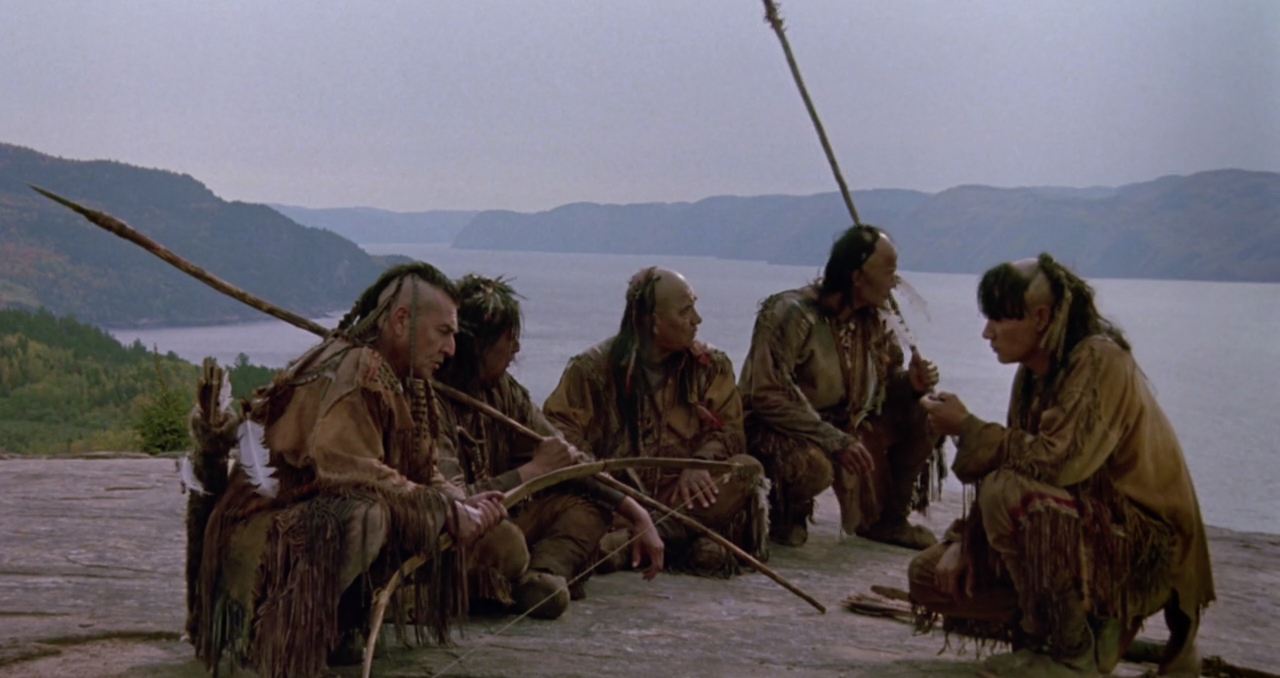
To wit, Roger Ebert, a great film enthusiast who was always a bit moody about films with the “wrong” message, seems to talk out of both sides of his mouth. He proclaims that Black Robe features “one of the most realistic depictions of Indian life I have seen,” and admits that Beresford’s film likely hues closer to reality than Kevin Costner’s uber-popular Dances with Wolves (to which he awarded full marks). He even states that the bleak depiction of Christian missionary efforts, “in which lonely men put their lives on the line in a test of faith, under conditions of appalling suffering and hardship,” is more authentic than romantic portrayals in other Hollywood productions (he cites The Mission and Shogun). And yet he proceeds to throw an ideological hissy fit—how dare those dastardly Christians pretend that the Indians needed a savior; they had no use for Jesus; and so on and so forth. Like many others, he found the ending to be unsavory. When Father LaForgue acquiesces and baptizes a group of Hurons who probably don’t believe the Gospel but hope that the “water sorcery” will immunize them from smallpox, he was left in “a state of depressed suspension.” The film ends with an intertitle stating that over the course of years, the Hurons adopted the Christian faith and the European way of life; the Iroquois, realizing their enemies had given up their warlike ways, slaughtered many of them.
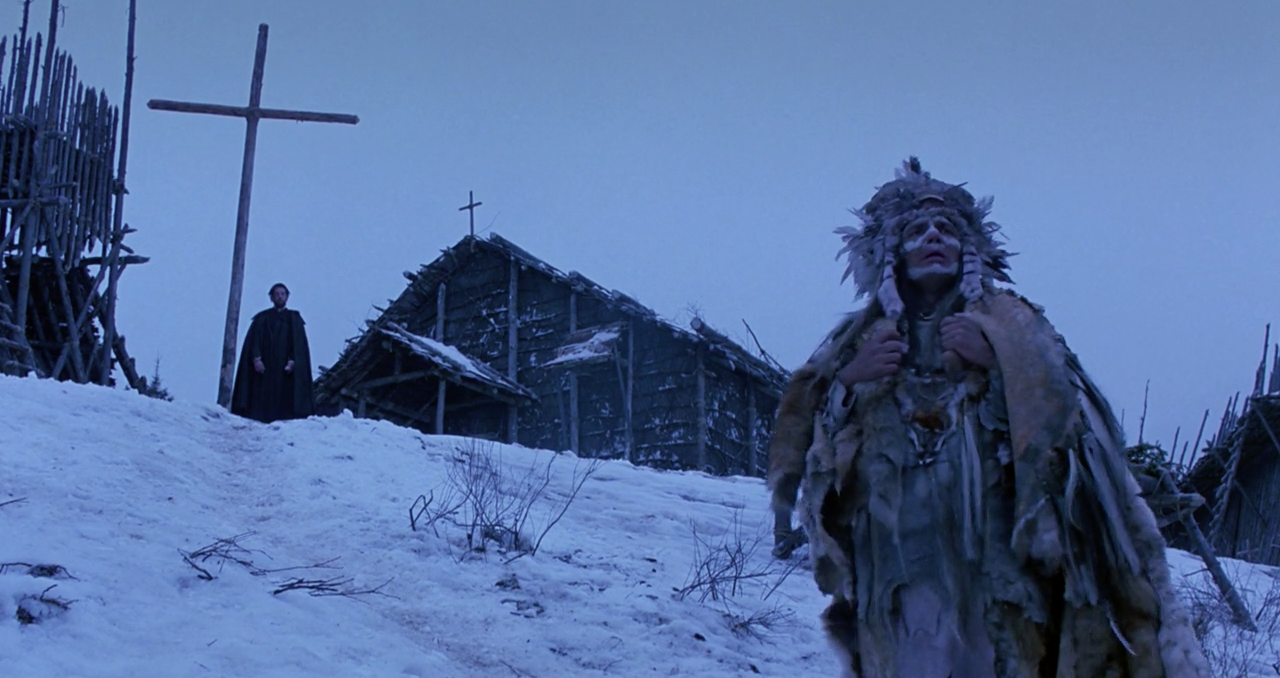
It’s amusing to watch Ebert tie himself in knots trying to object to so many things at once without offering any viable alternatives. He complains that the missionaries didn’t offer salvation, but destruction. Well, sure, if you don’t believe that the Christian faith is the way to salvation then salvation was never on the table. If you’re arguing from an atheistic perspective, which Ebert professes, there is no salvation at all and so it couldn’t have been offered in the first place. But that means that at worst the natives were given false hope but ultimately met the same end. Yet he longs for there to be something more even when his ideological position forbids it, ending his review by saying that Black Robe felt like “a prelude to nothing.” Almost as if he did indeed expect the salvation he claimed to not believe in, or at least a cathartic coda. Without either he found the film too troubling to enjoy. As such poignant spiritual meditations are rare in cinema, it was probably an infrequent occurrence for the critic. But, going out on a limb here, I posit that what actually ate at his soul when confronted with this bleak narrative was not its lack of catharsis but a nagging discomfort with his ill-considered worldview. With a dismissive approach toward the subject matter, he managed to criticize a narrative because its heartrending conclusion offers no hope for future glory, while maintaining that life itself is also a “prelude to nothing.”
It’s a whiff, too, not to realize that Black Robe is emphatically not a feel-good Christian movie, no matter what strain of the faith one subscribes to. It’s deliberately crafted to make the believer feel the gravity of LaForgue’s mission, to empathize with his uncertainties, to contend with ideas of election and reprobation and sin and redemption. It is true that for the unbelieving natives there was no salvation, only destruction. The Christian understands this and weeps in distress over their lost souls. The atheist, if he is consistent, merely shrugs.
Sources:
Martinez, Yunior. “Bruce Beresford’s Black Robe: The Society of Jesus’ Conversion of the New World”. Hollywood and History. 24 May 2014.
Ebert, Roger. “Black Robe”. RogerEbert.com. 1 November 1991.